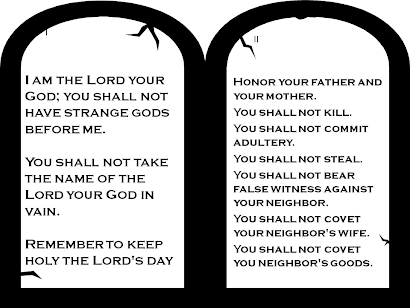"David" is in Florence's Academy of Fine Arts.
In the weekly audiences of Saint Pope John Paul II which comprise his "Theology of the Body," the late Holy Father's talks of 4/15/81, 4/22/81, 4/29/81, and 5/6/81 paid particular attention to representation of the human body in art:
"The artist who undertakes that theme in any sphere of art or through audiovisual media, must be aware of the full truth of the object, of the whole scale of values connected with it. He must not only take them into account in abstracto, but also live them correctly himself. This corresponds also to that principle of purity of heart....
"the process of this creation aims not only at making the model concrete..., but at the same time, at expressing in such concretizing what can be called the creative idea of the artist. This manifests his interior world of values, and so also his living the truth of his object. In this process a characteristic transfiguration of the model or of the material takes place and, in particular, of what is man, the human body in the whole truth of its masculinity or femininity. (From this point of view, as we have already mentioned, there is a very important difference, for example, between the painting or sculpture and the photograph or film.)....
"In the course of the various eras, beginning from antiquity--and above all in the great period of Greek classical art--there are works of art whose subject is the human body in its nakedness. The contemplation of this makes it possible to concentrate, in a way, on the whole truth of man, on the dignity and the beauty--also the 'suprasensual' beauty--of his masculinity and femininity. These works bear within them, almost hidden, an element of sublimation. This leads the viewer, through the body, to the whole personal mystery of man. In contact with these works, where we do not feel drawn by their content to 'looking lustfully,' which the Sermon on the Mount speaks about, we learn in a way that nuptial meaning of the body which corresponds to, and is the measure of, 'purity of heart.' But there are also works of art, and perhaps even more often reproductions, which arouse objection in the sphere of man's personal sensitivity--not because of their object, since the human body in itself always has its inalienable dignity--but because of the quality or way of its reproduction, portrayal or artistic representation....
"Paul VI's Encyclical Humanae Vitae emphasizes the 'need to create an atmosphere favorable to education in chastity' (n. 22). With this he intends to affirm that the way of living the human body in the whole truth of its masculinity and femininity must correspond to the dignity of this body and to its significance in building the communion of persons. It can be said that this is one of the fundamental dimensions of human culture, understood as an affirmation which ennobles everything that is human....The sculpted or painted image expresses man visually; the play or the ballet expresses him visually in another way, and the film in another way. Even literary work, in its own way, aims at arousing interior images, using the riches of the imagination or of human memory. So what we have called the ethos of the image cannot be considered apart from the correlative element, which we would have to call the ethos of seeing....
"creation of the atmosphere favorable to education in chastity contains these two elements. It concerns a reciprocal circuit which takes place between the image and the seeing, between the ethos of the image and the ethos of seeing. The creation of the image, in the broad and differentiated sense of the term, imposes on the author, artist or reproducer, obligations not only of an aesthetic, but also of an ethical nature. In the same way, 'looking,' understood according to the same broad analogy, imposes obligations on the one who is the recipient of the work.
"True and responsible artistic activity aims at overcoming the anonymity of the human body as an object 'without choice.' As has already been said, it seeks through creative effort such an artistic expression of the truth about man in his feminine and masculine corporeity, which is, so to speak, assigned as a task to the viewer and, in the wider range, to every recipient of the work. It depends on him, in his turn, to decide whether to make his own effort to approach this truth, or to remain merely a superficial consumer of impressions, that is, one who exploits the meeting with the anonymous body-subject only at the level of sensuality which, by itself, reacts to its object precisely without choice" (Saint Pope John Paul II, weekly audience of 5/6/81)


























No comments:
Post a Comment